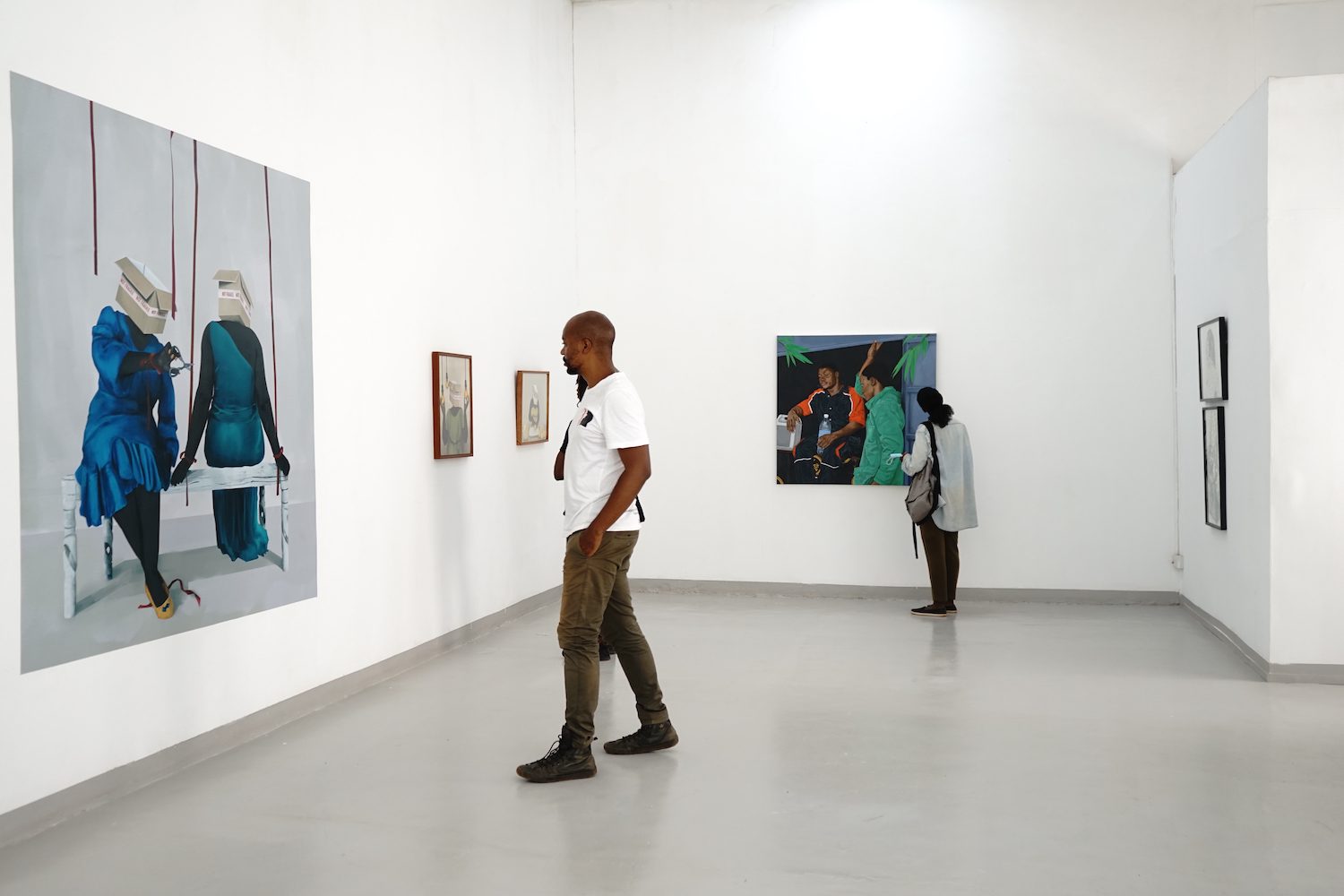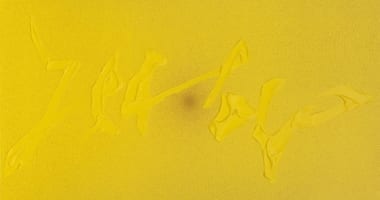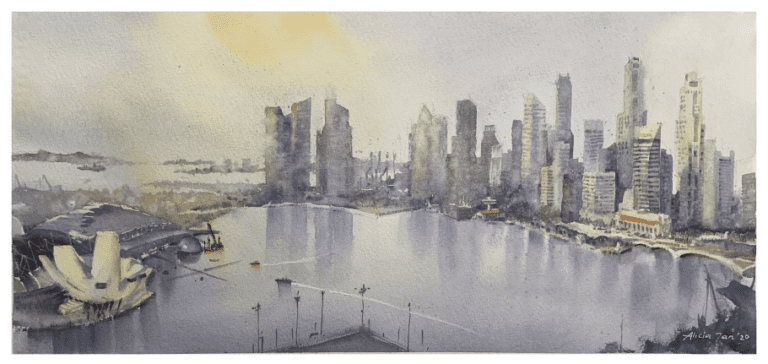
Alicia Tan Yen Ping, Good Morning, Singapore, 2020. Courtesy of Gallery 1819.
In art world circles, there have been whispers going around over the past couple of years. “Is Singapore the next international art world hub?” they said, noting the steady increase of wealthy expats, and the city’s growing status in other Asian markets.
In January 2023, these voices are no longer whispers. The main reason? The opening of Art SG.
Organized by The Art Assembly—the conglomerate that has launched several other fairs in the Asia-Pacific region, including Sydney Contemporary and the forthcoming Tokyo Gendai—Art SG ran from January 12th through 15th and exhibited works from more than 160 exhibitors. Galleries were both local and international (around 20 were based in Singapore).
The East Asian art market has seen plenty of change in the last few years. China has only just reopened to visitors after ending its zero-COVID policy, and Seoul has become an important global art destination thanks to an influx of international dealers and a successful first edition of Frieze in September. As the region recalibrates, could Singapore also set itself apart as a collecting destination?

Installation view of AC43 Gallery’s booth at S.E.A. Focus, 2023. Courtesy of AC43 Gallery.
Signs are pointing to yes: With the Singapore Biennale—a non-selling bonanza of experimental art taking place across the island—closing soon, and a smaller local fair, S.E.A. Focus, already established, the launch of Art SG represented an opportunity to test Singapore’s viability as a global art hub.
“This is the first time I’ve returned to Singapore since 2018. A lot has changed,” said Pearl Lam, whose eponymous gallery was located in the city-state’s colonial enclave turned art cluster, Gillman Barracks, until 2015 (Lam now runs spaces in Hong Kong and Shanghai). The biggest difference she noticed was in collectors, she said. Previously, clients were “mainly from Indonesia, the Philippines, Malaysia, and Thailand, in addition to the local Singaporeans,” she said. “Now that collectors from mainland China are visiting, we can expect to see buying potential in Singapore continue to grow.”
For major international galleries like Gagosian, the sense was that recent arrivals are helping Singapore’s art market thrive. “We are delighted to be in Singapore and to welcome another fair to the region,” said Nick Simunovic, Gagosian’s senior director in Hong Kong. “The local art community, combined with the arrival of expatriates from mainland China, Hong Kong, and other parts of Asia, make Singapore a particularly vibrant destination.” During the fair, the gallery was particularly pleased to have sold two sculptures by Ashley Bickerton to Museum MACAN in Indonesia, the artist’s adoptive homeland.

Installation view of Annely Juda Fine Art’s booth at Art SG, 2023. Courtesy of Annely Juda Fine Art.
The attendance of many large, established galleries was a strong vote of confidence in the fair and its location. Pace Gallery, David Zwirner, White Cube, Galerie Max Hetzler—these familiar names emphasize the potential that the global market sees in Singapore.
Preceding Art SG, there have also been other signs of Singapore’s growth. In 2022, Sotheby’s staged its first auction there in 15 years, and young, buzzy galleries like Hong Kong’s Woaw and Tokyo’s Whitestone Gallery have recently set up shop. Lehmann Maupin also recently hired a new Singapore-based director, Ken Tan, to lead the gallery’s strategy there (though it doesn’t have a space in the city). For Tan, Art SG was the missing puzzle piece: “Platforms like Art SG bring the immediacy and the buzz of an international contemporary art fair to Singaporeans and the region on a scale like never before,” he said.
The global outlook of these galleries is key for Tan. “While many local collectors have been focused on collecting Southeast Asian artists, in line with the inclinations of the national institutions, there are increasingly more serious discerning collectors who have been acquiring international works that do not easily sit in a local or regional context,” he added.
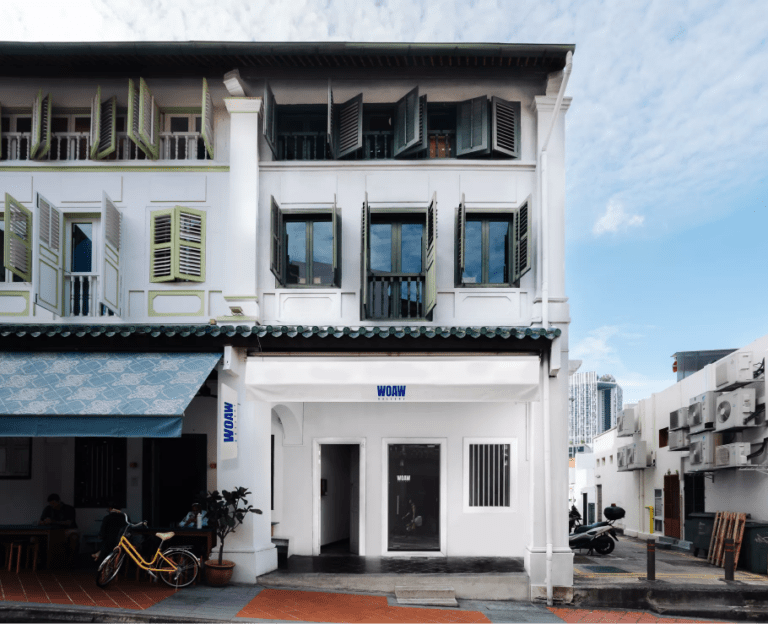
Exterior view of Woaw Gallery, Singapore. Courtesy of Woaw Gallery.
The week before Art SG was the smaller but more established fair, S.E.A. Focus. Founded in 2019, the platform is initiated by the local gallery STPI, and hosts a curated selection of 25 galleries. “This year was very special, because it was the first time that international visitors could come, which includes the galleries who have actually been showing with S.E.A. Focus for the last four years,” said Emi Eu, project director of S.E.A. Focus and executive director of STPI. Among the exhibitors were Berlin’s neugerriemschneider (who also participated in Art SG) and the multi-location Chinese gallery Vitamin Creative Space.
For Eu, the addition of Art SG to the calendar meant more visitors for the smaller fair (visitors were up slightly this year, by 6 percent compared to 2022), but crucially, more focus on Singapore’s domestic art scene: “The serious international art lovers, both buyers and professionals, they took this effort to come all the way here to really try to learn: What do we have to offer in Singapore?” she said.
This year, the local fair was also boosted by a new $25,000 fund that convenes a panel of experts to purchase contemporary local works for the Singapore Art Museum. Funded by the Yenn and Alan Lo Foundation, it’s guaranteed for at least three years—plenty of time for the city to make a mark.
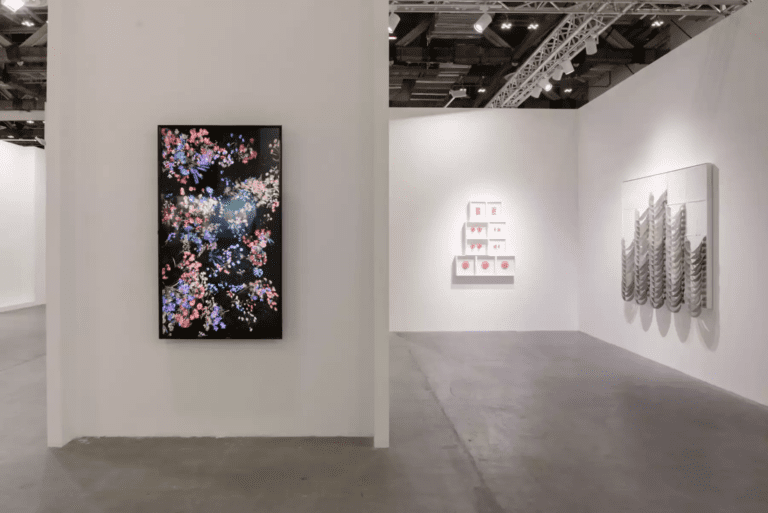
Installation view of Lehmann Maupins booth at Art SG, 2023. Courtesy of Lehmann Maupin.
Much of the buzz around Singapore stems from its growing significance as a global financial hub, and influx of wealth that could turbo-charge the market—features that make it comparable to Hong Kong. But after two years of zero-COVID policy in that city, set against Singapore’s strategy, since 2022, of relying on rapid vaccination over lockdown restrictions, the latter has increased its attractions.
For Eu, Hong Kong is a natural comparison for Singapore, which she claimed is “5 to 10 years” behind the level of the more established art capital. She put its potential down to the growth in visitors from nearby countries like Malaysia, Indonesia, and Thailand: “In Singapore, when we talk about the market, we are really actually referring to the region,” she said.
The question is if that market is sustainable. Although both S.E.A. Focus and Art SG praised the quantity and quality of collectors and galleries that made it to Singapore for their events, sales were reportedly slower than many recent fairs in the region, such as Frieze Seoul. Will the support of the growing expat community in Singapore help it to rival the flurry of dealers setting up shop elsewhere in the region? Can the city find a complementary role in the market, alongside Hong Kong and Seoul? In a year or two, we should have a better idea.
This article was written by Josie Thaddeus-Johns.

